This article was medically reviewed by Carmen W. Landrau, MD. Dr. Landrau is a board certified Cardiologist at Memorial Hermann Hospital in Texas and a public speaker on heart health. She completed her fellowship in Cardiology at the University of Texas Medical Center in Houston in 2009. Her work has been featured by the American Heart Association, St. Jude Medical, and Univision.
There are 35 references cited in this article, which can be found at the bottom of the page.
wikiHow marks an article as reader-approved once it receives enough positive feedback. In this case, 95% of readers who voted found the article helpful, earning it our reader-approved status.
This article has been viewed 214,127 times.
A heart attack happens when your heart cannot get enough oxygen because the blood flow is abruptly disrupted. The heart muscle cannot pump properly, and tissue rapidly begins to die.[1] About 735,000 Americans have a heart attack every year.[2] However, only about 27% of people know all the urgent symptoms of a heart attack.[3] Don't let yourself be a statistic. Crushing chest pain and upper body soreness (with or without exertion) are the typical heart attack symptoms, but there are other warning signs you should also heed. Recognizing the signs of a heart attack and getting to the hospital immediately can mean the difference between survival, irreversible tissue damage, and death. If you have any doubt about whether the pain you're experiencing is a heart attack, seek medical help immediately.
Steps
Recognizing When to Get Emergency Medical Attention
-
1Pay attention to chest pain. A pain in the chest, whether it's sharp or dull, is the most common sign of a heart attack. People who are having heart attacks often say they feel squeezing, fullness, pressure, tightness, or a sharp sensation in the center or left area of the chest. This feeling may last a few minutes or more, or disappear and return later.[4]
- Chest pain that stems from a heart attack is not always the crushing, heavy feeling that some people describe - often called the "Hollywood" heart attack. It can actually be quite mild, so don't ignore any type of chest pain.[5]
- "Retrosternal" chest pain is commonly felt. This refers to a pain behind the breastbone, or sternum. It is easy to confuse this pain with abdominal discomfort, like gas. If you have any doubt about this pain, call a doctor.
- Keep in mind that chest pain is not always present when a heart attack is occurring; in fact, over half of heart attack patients don't experience chest pain. Don't rule out the possibility of a heart attack just because you aren't hurting in that area.
-
2Check for discomfort in the upper body. Sometimes the pain from a heart attack radiates from the chest area outward, causing discomfort in the neck, jaw, abdomen, upper back, and the left arm.[6] The pain in these areas is usually a dull ache. If you haven't recently worked out or done anything that could cause upper body soreness, this type of pain could be a sign you're having a heart attack.[7]Advertisement
-
3Watch for dizziness, lightheadedness, and fainting.[8] These are also extremely common signs of a heart attack, though they are not present in every person who is having one.
- Like other heart attack symptoms, dizziness, lightheadedness and fainting are also signs of other illnesses, so they are easily overlooked. Don't ignore these symptoms, especially if you are also feeling chest pain.
- Women tend to have these symptoms more frequently than men, though not all women experience them.
-
4Monitor your breathing. Shortness of breath is a subtle heart attack symptom that should not be taken lightly. It is distinct from shortness of breath related to other illnesses because it seems to come out of nowhere. People who have experienced shortness of breath related to a heart attack describe feeling as though they have been exercising heavily even though all they've been doing is sitting and relaxing. [9]
- Shortness of breath may be your only heart attack symptom. Do not take it lightly! Particularly if you have not done anything that typically causes shortness of breath, seek emergency medical help if you experience this symptom.
-
5Watch for signs of nausea. The nausea may also lead to breaking out in a cold sweat, and even vomiting. If you experience these symptoms, especially in conjunction with other symptoms, you may be having a heart attack.[10]
-
6Monitor your anxiety. Many heart attack patients get extremely anxious and feel what is referred to as a "sense of impending doom." This feeling is not to be taken lightly; immediately seek medical attention if you experience this extreme emotion.
-
7Call emergency services immediately if you suspect that you or someone you know is having a heart attack. The sooner medical treatment is received, the greater the chance of surviving the attack. Don't risk talking yourself out of it or waiting too long.
Recognizing Other Early Warning Signs
-
1Seek medical attention for angina. Angina is chest pain that can feel like a slight pressure, a burning, or a fullness. It is often mistaken for heartburn. Angina can be a sign of coronary heart disease, which is the most common cause of heart attacks. If you feel any type of pain in your chest, it's best to get it checked out right away.[13]
- Most angina pain occurs in the chest. However, it may also occur in the arms, shoulders, neck, jaw, throat, or back. It may be hard to tell exactly where you're feeling the pain.[14]
- Angina pain usually gets better once you've rested for a few minutes. If your chest pain lasts for more than a few minutes or doesn't improve with rest or angina medication, seek emergency medical assistance.[15]
- Some people experience angina after exercising, and it's not always a sign of disease or a heart attack. A change in normal patterns is the most important thing to watch for.
- If you have what you believe to be painful indigestion, you may actually be experiencing angina. Make an appointment with your doctor to determine the cause of the pain.
-
2Determine whether you have an arrhythmia. Arrhythmias are abnormal heart rhythms, and they're present in at least 90% of people who have heart attacks. If you have a fluttering feeling in your chest or feel like your heart “skipped a beat,” you may have an arrhythmia.[16] See a specialist who can conduct testing to determine the cause of your symptoms.
- Arrhythmia may also display more serious symptoms, such as dizziness, lightheadedness, fainting, rapid or pounding heartbeat, shortness of breath, and chest pain. If you experience any of these symptoms with arrhythmia, seek emergency medical assistance.[17]
- Although arrhythmia is very common, especially in older adults, it can be a sign of severe medical issues. Do not simply ignore an arrhythmia. Consult with your physician to be sure you do not have a more serious condition.[18]
-
3Be aware of disorientation, confusion, and stroke-like symptoms. In older people, these symptoms may actually be a sign of heart problems. Seek medical attention if you experience unexplainable cognitive difficulties.
-
4Look for unusual fatigue. Women are more likely than men to experience unusual, sudden, or unexplained fatigue as a symptom of heart attack.[19] This fatigue may start a few days in advance of an actual heart attack.[20] If you experience abrupt, unusual fatigue without having changed your daily activities, talk with your doctor immediately.
Taking Action While Waiting for Emergency Assistance
-
1Contact emergency services immediately. Your emergency medical services may tell you how to help the person experiencing symptoms. Do exactly what the operator instructs. Call for help before doing anything else.[21]
- Calling 911 (or your emergency services number) will speed up your admittance into the hospital vs. driving to the emergency room yourself. Call an ambulance. Do not drive to the hospital yourself unless you have no other option available. [22]
- Treatment for heart attacks is most effective if started within 1 hour of the first appearance of symptoms.[23]
-
2Stop all activity. Sit down and rest. Try to keep calm by breathing evenly as best as you can.[24]
- Loosen any tight clothing, such as shirt collars and belts.
-
3Take any medication you have been prescribed for a heart condition. If you take prescription medication such as nitroglycerin, take your recommended dose while you wait for emergency services to arrive.[25]
- Do not take prescription medication that has not been specifically prescribed for your use by a physician. Taking someone else's medication could harm you.[26]
-
4
-
5See a doctor even if symptoms improve. Even if your symptoms improve within five minutes, see your doctor. A heart attack can leave clots in your bloodstream that can cause more health problems, such as a future heart attack or stroke. You need to be evaluated by a medical professional.
Understanding Other Causes of Symptoms
-
1Recognize dyspepsia symptoms. Dyspepsia is also known as “indigestion” or “upset stomach.” It is usually a chronic or recurrent pain that occurs in your upper abdominal area.[29] Dyspepsia can cause mild chest pain or pressure. One or more of the following symptoms will likely coincide with this pain:[30]
- Heartburn
- Feeling bloated or full
- Burping
- Acid reflux
- Stomach pain or “upset stomach”
- Loss of appetite
-
2Recognize GERD (gastroesophageal reflux disease) symptoms. GERD happens when your esophagus muscles do not close properly, allowing your stomach contents to leak back into your esophagus. This can cause heartburn and a feeling as though food is “stuck” in your chest. You may experience nausea, especially after eating.[31]
- The symptoms of GERD usually occur after eating. They get worse if you lie down or bend over, or they may worsen at night.
-
3Recognize asthma symptoms. Asthma can cause feelings of chest pain, pressure, or tightness. These symptoms usually co-occur with coughing and wheezing.[32]
- Mild asthma attacks usually lessen after a few minutes. If you still have difficulty breathing after a few minutes, seek medical assistance.
-
4Recognize a panic attack. People experiencing a feeling of intense anxiety may suffer a panic attack. The symptoms of a panic attack may initially seem similar to those of a heart attack. You may experience a racing heartbeat, sweating, feeling weak or faint, chest pain, or trouble breathing.[33]
- The symptoms of a panic attack occur very rapidly and usually disappear rapidly as well. If your symptoms do not improve within 10 minutes, seek medical assistance.[34]
Knowing Your Risk
-
1Consider your age. Your risk of heart attack increases as you age. Men who are 45 or older, and women who are 55 or older, are more likely to have a heart attack than younger people.[35]
- People who are older may have different symptoms of heart attack than younger adults. Symptoms to watch for in older individuals include fainting, trouble breathing, nausea, and weakness.
- Dementia symptoms, such as incomplete memory, erratic or unusual behavior, and impaired reasoning, may be signs of a “silent” heart attack in elderly people.[36]
-
2
-
3Stop smoking. Smoking and exposure to secondhand smoke increase your risk of having a heart attack.[40]
-
4Think about other chronic health issues. Your risk of heart attack is greater if you have any of the following medical conditions:[41]
- High blood pressure
- High blood cholesterol
- Family or personal history of heart attack or stroke
- Diabetes
- People with diabetes may experience less dramatic heart attack symptoms. Seek medical attention immediately for any suspected symptoms.[42]
Warnings
- You are at higher risk for a second heart attack if you have had one before.⧼thumbs_response⧽
- Do not use a defibrillator (AED) unless you are specifically trained.⧼thumbs_response⧽
- In silent ischemia, a heart attack may occur with no prior symptoms or warning signs.⧼thumbs_response⧽
References
- ↑ http://www.nhlbi.nih.gov/files/docs/public/heart/heart_attack_fs_en.pdf
- ↑ http://www.cdc.gov/heartdisease/facts.htm
- ↑ http://www.cdc.gov/mmwr/preview/mmwrhtml/mm5707a3.htm
- ↑ https://www.cdc.gov/heartdisease/heart_attack.htm
- ↑ https://www.spartanburgregional.com/events/hollywood-heart-attack
- ↑ Domino, F. (n.d.). In The 5-minute clinical consult standard 2015 (23rd ed.)
- ↑ http://www.nhlbi.nih.gov/files/docs/public/heart/heart_attack_fs_en.pdf
- ↑ http://www.heart.org/HEARTORG/Conditions/HeartAttack/WarningSignsofaHeartAttack/Heart-Attack-Symptoms-in-Women_UCM_436448_Article.jsp
- ↑ http://www.nhlbi.nih.gov/files/docs/public/heart/heart_attack_fs_en.pdf
- ↑ https://www.heartandstroke.ca/heart-disease/emergency-signs
- ↑ https://medlineplus.gov/ency/article/000063.htm
- ↑ https://www.cdc.gov/media/pressrel/r020215.htm
- ↑ http://www.nhlbi.nih.gov/health/health-topics/topics/angina
- ↑ https://familydoctor.org/condition/angina/
- ↑ https://www.nhlbi.nih.gov/health-topics/angina/
- ↑ https://www.heartandstroke.ca/heart-disease/conditions/arrhythmia
- ↑ http://www.heart.org/HEARTORG/Conditions/Arrhythmia/SymptomsDiagnosisMonitoringofArrhythmia/Symptoms-Diagnosis-Monitoring-of-Arrhythmia_UCM_002025_Article.jsp
- ↑ http://www.heart.org/HEARTORG/Conditions/Arrhythmia/SymptomsDiagnosisMonitoringofArrhythmia/Symptoms-Diagnosis-Monitoring-of-Arrhythmia_UCM_002025_Article.jsp
- ↑ http://www.heart.org/HEARTORG/Conditions/HeartAttack/WarningSignsofaHeartAttack/Heart-Attack-Symptoms-in-Women_UCM_436448_Article.jsp
- ↑ http://www.mayoclinic.org/diseases-conditions/heart-attack/in-depth/heart-attack-symptoms/art-20047744?pg=2
- ↑ http://www.nhlbi.nih.gov/health/health-topics/topics/heartattack/signs
- ↑ https://www.bhf.org.uk/informationsupport/conditions/heart-attack
- ↑ http://www.nhlbi.nih.gov/files/docs/public/heart/heart_attack_fs_en.pdf
- ↑ http://www.nlm.nih.gov/medlineplus/ency/article/000063.htm
- ↑ http://www.nlm.nih.gov/medlineplus/ency/article/000063.htm
- ↑ http://www.mayoclinic.org/first-aid/first-aid-heart-attack/basics/art-20056679
- ↑ http://www.everydayhealth.com/heart-health-specialist/helping-heart-attack-victim.aspx
- ↑ http://www.mayoclinic.org/first-aid/first-aid-heart-attack/basics/art-20056679
- ↑ http://gi.org/guideline/management-of-dyspepsia/
- ↑ https://www.pennmedicine.org/updates/blogs/heart-and-vascular-blog/2019/august/4-silent-heart-attack-signs
- ↑ http://www.nlm.nih.gov/medlineplus/ency/article/000265.htm
- ↑ https://www.airnow.gov/air-quality-and-health/asthma-and-heart-disease/
- ↑ https://health.clevelandclinic.org/the-difference-between-panic-attacks-and-heart-attacks/
- ↑ Agabegi, S. (2013). Diseases of the Cardiovascular System. In Step-up to medicine (3rd ed., p. 8). Philadelphia: Wolters Kluwer/Lippincott Williams & Wilkins.
- ↑ https://my.clevelandclinic.org/health/diseases/16818-heart-attack-myocardial-infarction
- ↑ Domino, F. (n.d.). In The 5-minute clinical consult standard 2015 (23rd ed.)
- ↑ https://my.clevelandclinic.org/health/diseases/16818-heart-attack-myocardial-infarction
- ↑ http://www.nhlbi.nih.gov/files/docs/public/heart/heart_attack_fs_en.pdf
- ↑ http://www.mayoclinic.org/diseases-conditions/heart-attack/basics/risk-factors/con-20019520
- ↑ http://www.nhlbi.nih.gov/health/health-topics/topics/smo
- ↑ https://my.clevelandclinic.org/health/diseases/16818-heart-attack-myocardial-infarction
- ↑ Domino, F. (n.d.). In The 5-minute clinical consult standard 2015 (23rd ed.)
About This Article
To recognize a heart attack, watch for signs of nausea, dizziness, and extreme fatigue in conjunction with chest pain, discomfort in the upper body, shortness of breath, and a sudden feeling of acute anxiety. Remember that chest pain associated with heart attacks is not always intense. Many people report mild chest discomfort and some don't feel any chest pain at all, so it's important to be aware of other common symptoms. If you suspect that you or someone you know is having a heart attack, call emergency services immediately for help. To learn more about early warning signs of a heart attack, read on!



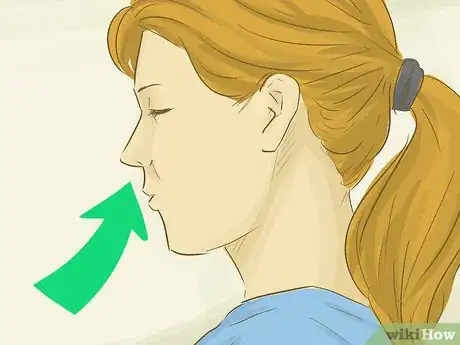



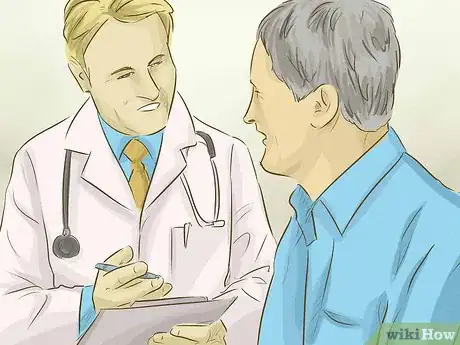

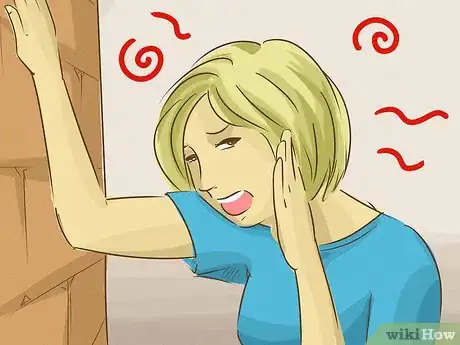


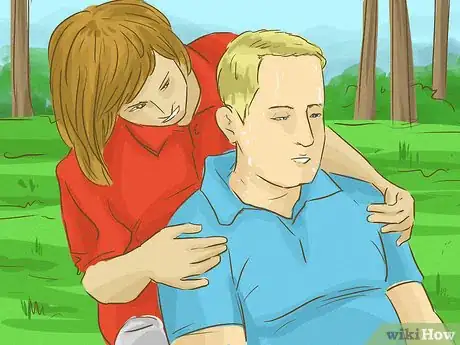




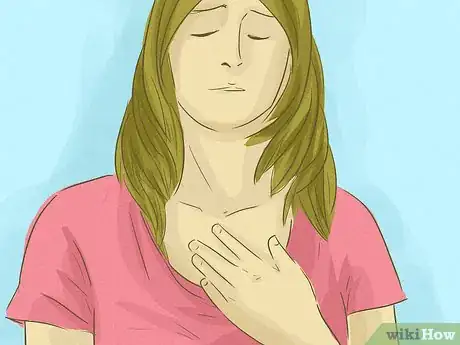
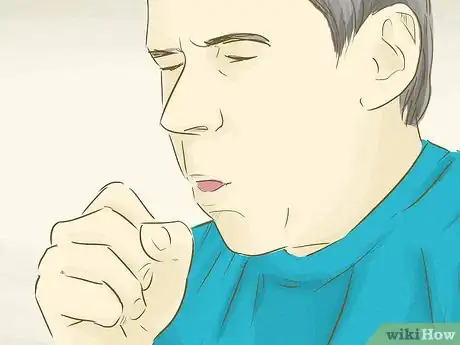











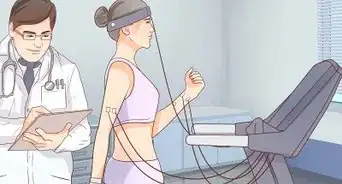












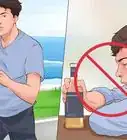






































Medical Disclaimer
The content of this article is not intended to be a substitute for professional medical advice, examination, diagnosis, or treatment. You should always contact your doctor or other qualified healthcare professional before starting, changing, or stopping any kind of health treatment.
Read More...